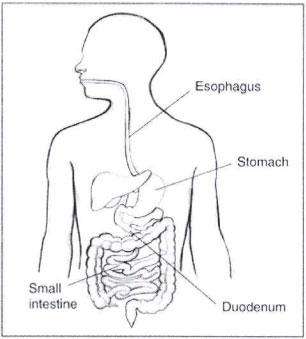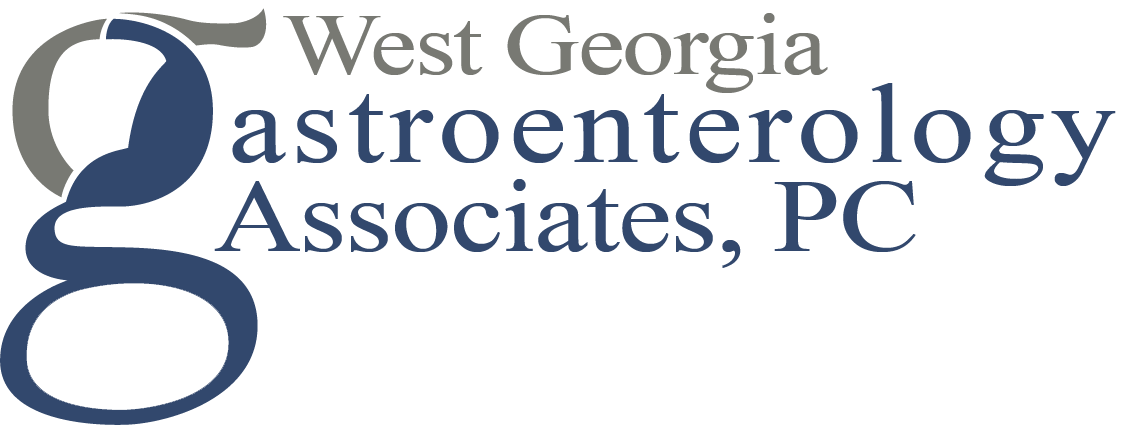
Upper Endoscopy Preparation Instructions
What Is Upper Gastrointestinal (GI) Endoscopy?

Upper GI endoscopy is a procedure that uses a lighted, flexible endoscope to see inside the upper Gl tract. The upper GI tract includes the esophagus, stomach, and duodenumthe first part of the small intestine.
Upper GI endoscopy is a procedure that uses a lighted, flexible endoscope to see inside the esophagus, stomach, and duodenum.
What Problems Can Upper GI Endoscopy Detect?
Upper GI endoscopy can detect
- ulcers
- abnormal growths
- precancerous conditions
- bowel obstruction
- inflammation
- hiatal hernia
When Is Upper GI Endoscopy Used?
Upper Gl endoscopy can be used to determine the cause of
- abdominal pain
- nausea
- vomiting
- swallowing difficulties
- gastric reflux
- unexplained weight loss
- anemia
- bleeding in the upper Gl tract
Upper Gl endoscopy can be used to remove stuck objects, including food, and to treat conditions such as bleeding ulcers. It can also be used to biopsy tissue in the upper GI tract. During a biopsy, a small piece of tissue is removed for later examination with a rmcroscope.
How To Prepare For Upper Gl Endoscopy
The upper GT tract must be empty before upper GI endoscopy. Generally, no eating or drinking is allowed for 4 to 8 hours before the procedure. Smoking and chewing gum are also prohibited during this time.
Patients should tell their doctor about all health conditions they have-especially heart and lung problems, diabetes, and allergies- and all medications they are taking. Patients may be asked to temporarily stop taking medications that affect blood clotting or interact with sedatives, which are often given dming upper GT endoscopy.
Medications and vitamins that may be restricted before and after upper GI endoscopy include
- nonsteroidal anti-inflammatory drugs such as aspirin, ibuprofen (Advil), and naproxen (Aleve)
- blood thinners
- blood pressure medications
- diabetes medications
- antidepressants
- dietary supplements
Driving is not permitted for 12 to 24 hours after upper GI endoscopy to allow sedatives time to completely wear off. Before the appointment, patients should make plans for a ride home.
How Is Upper Gl Endoscopy Performed?
Upper GI endoscopy is conducted at a hospital or outpatient center.
Patients may receive a local, liquid anesthetic that is gargled or sprayed on the back of the throat. The anesthetic numbs the throat and calms the gag reflex. An intravenous (IV) needle is placed in a vein in the arm if a sedative will be given. Sedatives help patients stay relaxed and comfortable. While patients are sedated, the doctor and medical staff monitor vital signs.
During the procedure, patients lie on their back or side on an examination table. An endoscope is carefully fed down the esophagus and into the stomach and duodenum. A small camera mounted on the endoscope transmits a video image to a video moni tor, allowing close examination of the intestinal lining. Air is pumped through the endoscope to inflate the stomach and duodenum, making them easier to see. Special tools that slide through the endoscope allow the doctor to perform biopsies, stop bleeding, and remove abnormal growths.
Recovery From Upper GI Endoscopy
After upper GT endoscopy, patients arc moved to a recovery room where they wait about an hour for the sedative to wear off. During this time, patients may feel bloated or nauseated. They may also have a sore throat, which can stay for a day or two. Patients will likely feel tired and should plan to rest for the remainder of the day. Unless otherwise directed, patients may immediately resume their normal diet and medications.
Some resu lts from upper GI endoscopy are available immediately after the procedure. The doctor will often share results with the patient after the sedative has worn off. Biopsy results are usually ready in a few days.
